13-inch Retina MacBook Pro Review (Late 2012)
by Anand Lal Shimpi on November 13, 2012 2:53 AM ESTEarlier this year Apple introduced its first Mac equipped with a Retina Display. The 15.4-inch MacBook Pro with Retina Display (henceforth rMBP) introduced a brand new, thinner and lighter chassis to the MacBook family while serving as the launch vehicle for the world's first 2880 x 1800 notebook display.
Although the 15-inch rMBP was significantly more portable than its predecessor, the number one question asked after its release was when the MacBook Air would get similar Retina Display treatment. As the first Mac with an ultra high resolution IPS panel, the value of the 15-inch rMBP was obvious, but these days the market demands extreme portability.
Over the past few years, the 13-inch notebook form factor emerged as a great balance between functional size and portability. Although many hoped for a MacBook Air equipped with a Retina Display, for the follow on to the 15-inch rMBP Apple made the logical progression and brought a Retina Display to its 13-inch MacBook Pro.
In doing so, the 13-inch MacBook Pro with Retina Display gets all of the chassis improvements that were first introduced with the 15-inch model this summer. Apple ditched the optical drive, slimmed up the notebook, and integrated Intel's 22nm Ivy Bridge silicon. Better speakers, a larger battery, USB 3.0, and an extra Thunderbolt port are all a part of the next-gen package.
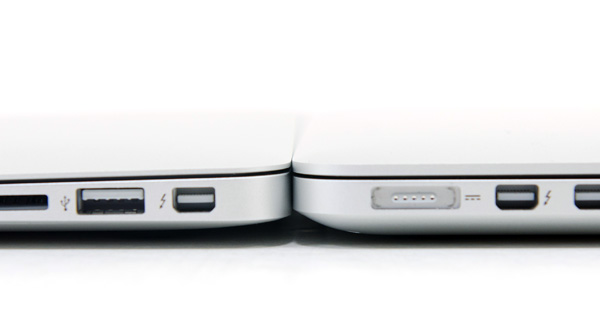
13-inch MBA (left) vs. 13-inch rMBP (right)
By virtue of the smaller display size and the next-gen MacBook Pro chassis, the 13-inch rMBP does a lot to blur the line between the Air and Pro lines.
13-inch rMBP: Form Factor Perfection?
I always liked the 13-inch form factor of the MacBook Pro, but I never liked the laptop itself. It always had too low resolution of a screen to be productive and it was too big and heavy to make sense compared to the MacBook Air. Once the 13-inch MacBook Air got Sandy Bridge, I pretty much stopped recommending the 13-inch MacBook Pro. You got a lower resolution display, and didn't gain enough to make the tradeoff worthwhile. Upgradability was a definite advantage, but most of the time when I'm making a personal recommendation to someone it's a person who isn't going to upgrade their machine regardless. When Apple revealed that the 13-inch MacBook Pro was still its best selling notebook, I was a bit surprised - although it did make sense.
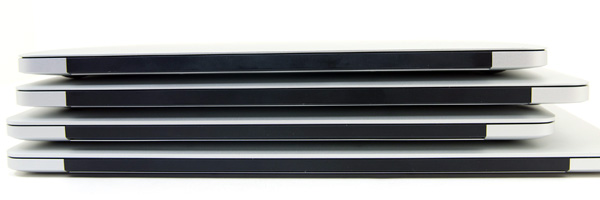
From top to bottom: 11-inch MBA, 13-inch MBA, 13-inch rMBP, 15-inch rMBP
The new 13-inch MacBook Pro with Retina Display changes all of that entirely. I'm now finding it more difficult to recommend the 13-inch MacBook Air, and have almost every reason to recommend the new Pro. The reduction in chassis thickness and weight give it an almost ultraportable feel. At 3.57 pounds, the 13-inch rMBP is light enough that traveling with it isn't a problem. Thanks to the smaller display, pulling it out on a crowded airplane in coach and getting work done isn't an issue either. The larger 15-inch rMBP still struggles in the airplane use case, although the reduction in thickness made it a bit better than its non-Retina predecessor.
| MacBook Pro with Retina Display Comparison | ||||||
| 15-inch MacBook Pro with Retina Display | 13-inch MacBook Pro with Retina Display | 13-inch MacBook Pro | 13-inch MacBook Air | |||
| Dimensions | 0.71 x 14.13 x 9.73" | 0.75 x 12.35 x 8.62" | 0.95 x 12.78 x 8.94" | 0.11 - 0.68 x 12.8 x 8.94" | ||
| Weight | 4.46 lbs (2.02 kg) | 3.57 lbs (1.62 kg) | 4.5 lbs (2.06 kg) | 2.96 lbs (1.35 kg) | ||
| CPU | Core i7-3615QM | Core i5-3210M | Core i5-3210M | Core i5-3427U | ||
| CPU Cores/Threads | 4/8 | 2/4 | 2/4 | 2/4 | ||
| L3 Cache | 6MB | 3MB | 3MB | 3MB | ||
| Base CPU Clock | 2.3GHz | 2.5GHz | 2.5GHz | 1.8GHz | ||
| Max CPU Turbo | 3.3GHz | 3.1GHz | 3.1GHz | 2.8GHz | ||
| GPU | Intel HD 4000 + NVIDIA GeForce GT 650M | Intel HD 4000 | Intel HD 4000 | Intel HD 4000 | ||
| GPU Memory | 1GB GDDR5 | - | - | - | ||
| System Memory | 8GB DDR3L-1600 | 8GB DDR3L-1600 | 4GB DDR3-1600 | 4GB DDR3L-1600 | ||
| Primary Storage | 256GB SSD | 128GB SSD | 500GB 5400RPM HDD | 128GB SSD | ||
| Optical Drive | N | N | Y | N | ||
| Display Size | 15.4-inches | 13.3-inches | 13.3-inches | 13.3-inches | ||
| Display Resolution | 2880 x 1800 | 2560 x 1600 | 1280 x 800 | 1400 x 900 | ||
| Thunderbolt Ports | 2 | 2 | 1 | 1 | ||
| USB Ports | 2 x USB 3.0 | 2 x USB 3.0 | 2 x USB 3.0 | 2 x USB 3.0 | ||
| Other Ports | SDXC reader, HDMI out, headphone out | SDXC reader, HDMI out, headphone out | GigE, FireWire 800, SDXC reader, headphone out | SDXC reader, headphone out | ||
| Battery Capacity | 95 Wh | 74 Wh | 63.5 Wh | 50 Wh | ||
| Price | $2199 | $1699 | $1199 | $1199 | ||
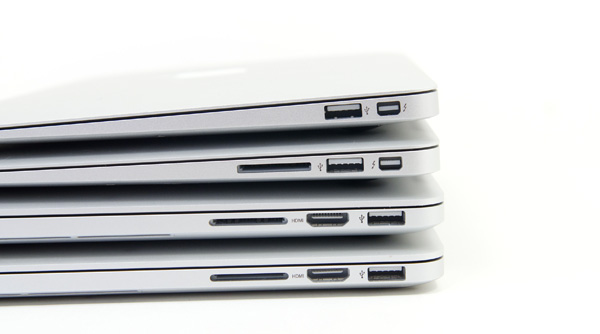
From top to bottom: 11-inch MBA, 13-inch MBA, 13-inch rMBP, 15-inch rMBP
The dimensions are very surprising. The 13-inch rMBP maintains a uniform thickness of 0.75-inches, 5.6% thicker than the 15-inch model (but obviously with less total volume thanks to a smaller planar footprint). Compared to the thickest point on the 13-inch MacBook Air however you're only gaining 0.07-inches. The weight difference is marginal as well. The 13-inch MBA shaves off only 0.61 lbs. The 15-inch rMBP is less than a pound heavier as well (0.89 lbs). Apple has done its best to make your decision about picking the right screen size and internals, almost entirely removing things like weight from the discussion. While the 13-inch MBA is still clearly a more portable device, I believe with the 13-inch rMBP Apple has built a chassis that's truly an alternative.
The downside to all of this is a machine that really can't be upgraded. Apple outfits all of the 13-inch rMBPs with 8GB of DDR3L-1600, although there's no BTO option for 16GB of RAM (which is availble on the 15). The integrated SSD module is removable, although it's not intended to be user serviceable. I don't believe the 8GB memory limitation will be much of an issue over the useful life of the system. If we assume 8GB is enough for the foreseeable future, providing more (or easily upgradeable) storage is my biggest complaint about the fairly fixed configuration. The good news is the SSD module can be upgraded and some companies do offer an upgrade path for it. We've already grown used to having notebooks with integrated batteries and CPUs soldered down to the motherboard, which makes the rMBP pill a lot easier to swallow.
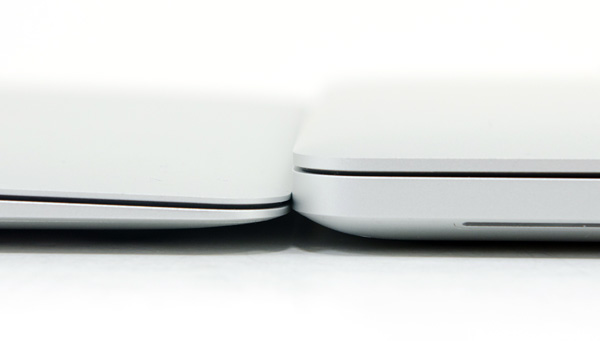
13-inch MBA (left) vs. 13-inch rMBP (right)
I appreciate the fact that there's no reduction in IO when moving between the 13 and 15-inch rMBPs. The 13-inch model retains the two USB 3.0 ports, two Thunderbolt ports, headphone/mic jack, SD card reader, and HDMI out of its bigger brother. Apple's MagSafe 2 connector makes an appearance as well.
The keyboard and trackpad remain very similar to the 15-inch model, although I feel like there's slightly more key travel on the 13. Neither system has the key travel of the older, non-Retina MacBook Pros but that's a sacrifice that seems like we'll be making more of as we pursue even thinner designs. I do believe that despite Apple's pursuit of a very thin chassis that it continues to deliver a very usable keyboard with great feel. I've typed tens of thousands if not hundreds of thousands of words on Apple's current crop of keyboards, and they still manage to hold up quite well.
The trackpad shares a similar story. The glass covered trackpad of the 13-inch rMBP is similar in size and identical in feel to the trackpad on the rest of Apple's mobile lineup. The 13's trackpad performance and behavior remains among the best in the industry.


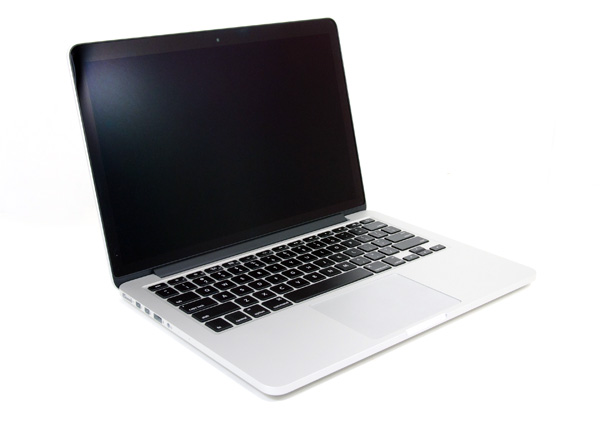
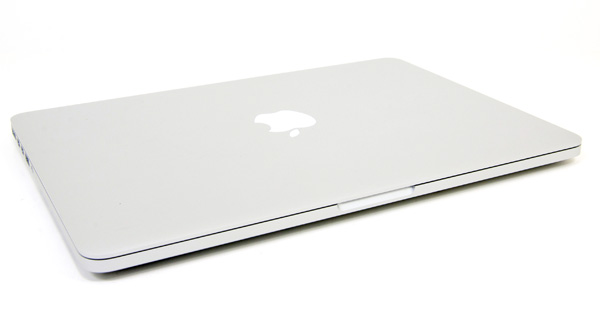
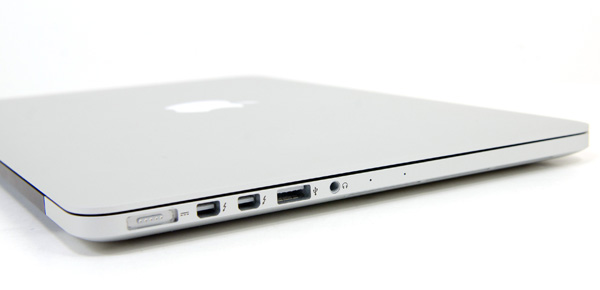








79 Comments
View All Comments
repoman27 - Tuesday, November 13, 2012 - link
And just to further clarify, Thunderbolt does not really mux DP and PCIe signals, it takes the packets from both protocols and transports them via a common switching fabric, so that wording is slightly misleading.tipoo - Tuesday, November 13, 2012 - link
In my time with these, I find there is just a bit of UI lag to most things compared to an Air or the regular Macbook Pros, most of the time it's hard to even notice unless they are side by side. The calender flip animation and sometimes the green button re-size are particularly painful, you can literally count out the frames on the former. On the 15" you can force it to use the dGPU on AC power which fixes that, but there is no fallback for the 13".tipoo - Tuesday, November 13, 2012 - link
Speaking of which, if switching to the dGPU fixes some of the lag does that mean more of the rendering pipeline is given to the Nvidia chip unlike the HD4000, as otherwise that would put a hole in the single threaded performance theory?sputnik78 - Tuesday, November 13, 2012 - link
"There's not much you can do here other than wait for faster hardware or buy the fastest CPU available on whatever system you're considering. "Yes there is. Use Firefox or Chrome.
I could not believe the depth of detail in the investigation of the scrolling in Safari issue without the simple test to swap out with Firefox or Chrome and see how much of the problem is Safari rather than the OS/Hardware.
With Firefox, you can enable and disable GPU accelerated UI as well, to see if that helps or hurts.
My experience with all three browsers is that each can have various performance issues with some websites and situations, but that when one does, one of the others tends to be OK.
MrCromulent - Tuesday, November 13, 2012 - link
Firefox doesn't even have Retina support yet, does it? Last time I heard it was planned for version 18.Disabling hardware acceleration in Firefox would probably just result in even worse performance since it is enabled by default and the CPU single-thread performance is going to get even more maxed out otherwise.
paravorheim - Tuesday, November 13, 2012 - link
Dear Anand,you mentioned in both the Intel S3700 and 13" rMBP reviews that OS X did not respond well to high IO latency. Could you expand on what you meant by that? Or is the explanation too complicated to put into layman's terms?
AmdInside - Tuesday, November 13, 2012 - link
I don't see how this is a much better option for someone who travels a lot and uses it mainly for typing. I love my MBA and only wish would be that it had more RAM and IPS display. If i had to do it all over again, I think I would still buy the MBA over the rMBP. If I had more money than I knew what to do with, I guess I'd go with the rMBP though.thefizzle656 - Tuesday, November 13, 2012 - link
IMO what is wrong with the 13" rMBP is not just that the word "Pro" doesn't at all describe the hardware specs and capabilities of the machine, but that it is so so overpriced for what you get. Even Apple Fanbois are have been criticizing Apple for the complete ripoff that the 13" rMBP is.spronkey - Tuesday, November 13, 2012 - link
You know, I have to agree with those who say there's a bit of Apple bias going on here. So many important criteria here have been glossed over - remember the pricing of this machine puts it far out of reach for most 'consumers', who go and buy $500-700 dell machines. It's a high-end part for a high-end prosumer/professional.The bottom line is - 8GB of RAM as a maximum ceiling (note - my *2008* MacBook Pro had the same limit) is far too low, and Anand you of all people should know that in the usable life of this machine (lets say 3 years), that limit is going to be hit - especially when it's not uncommon for web browsers with media-heavy content to eat 2+GB. And the move to 64-bit for stuff like the Adobe creative suite, which is a common use case for this particular machine, will eat even more RAM. I'm running 8GB on my MBP at the moment and I max it out very frequently.
I'm also not sure how you can recommend this over the 13" Air. It's much more expensive, the hardware is largley similar, performance isn't *that* much better, it doesn't offer anything in terms of upgradability other than Thunderbolt connectivity, and it's bigger and heavier. Not to mention in the real world, in 2012, it's a laggier experience.
Now, lets imagine an alternate universe where Apple decided not to shave quite so much off the size of the previous 13" pro, and instead gave us a quad core i5/i7 and a couple of RAM slots. Perhaps even a dedicated GPU and a 2.5" bay. Now that would be an improvement. What we have here is an expensive Macbook Air with a pretty display for text, that makes almost everything else look awful.
seapeople - Saturday, November 17, 2012 - link
When will we stop the insanity with this complaint about memory. Times are different, memory requirements are not going to quadruple again in the next four years. The world is not gearing up for Microsoft Gargantuan 9 which will require 8GB of RAM to load the desktop. If anything the world is going more mobile, and memory requirements will likely stagnate. Consider than an Ipad has just one GB of RAM, and they are selling about as many of those as casual consumer PC's nowadays, and you can see where we're heading.Furthermore, any browser worth its salt that's pushing 2GB of RAM based on some standard media heavy tasks will drop that RAM in an instant without a huge user experience impact if you start nearing a system limit. It's just caching everything in sight because it sees that you have 16 GB of RAM; it doesn't mean your system would grind to a halt with only 8!